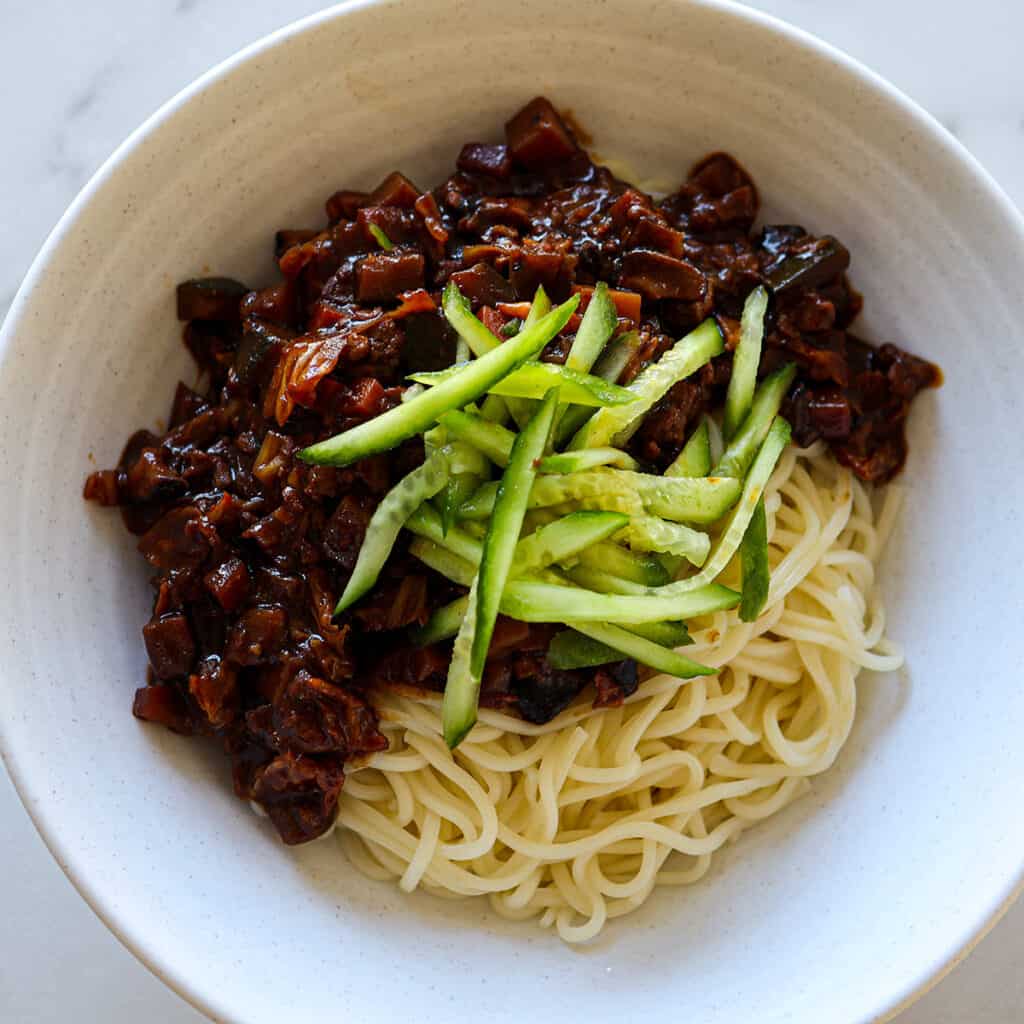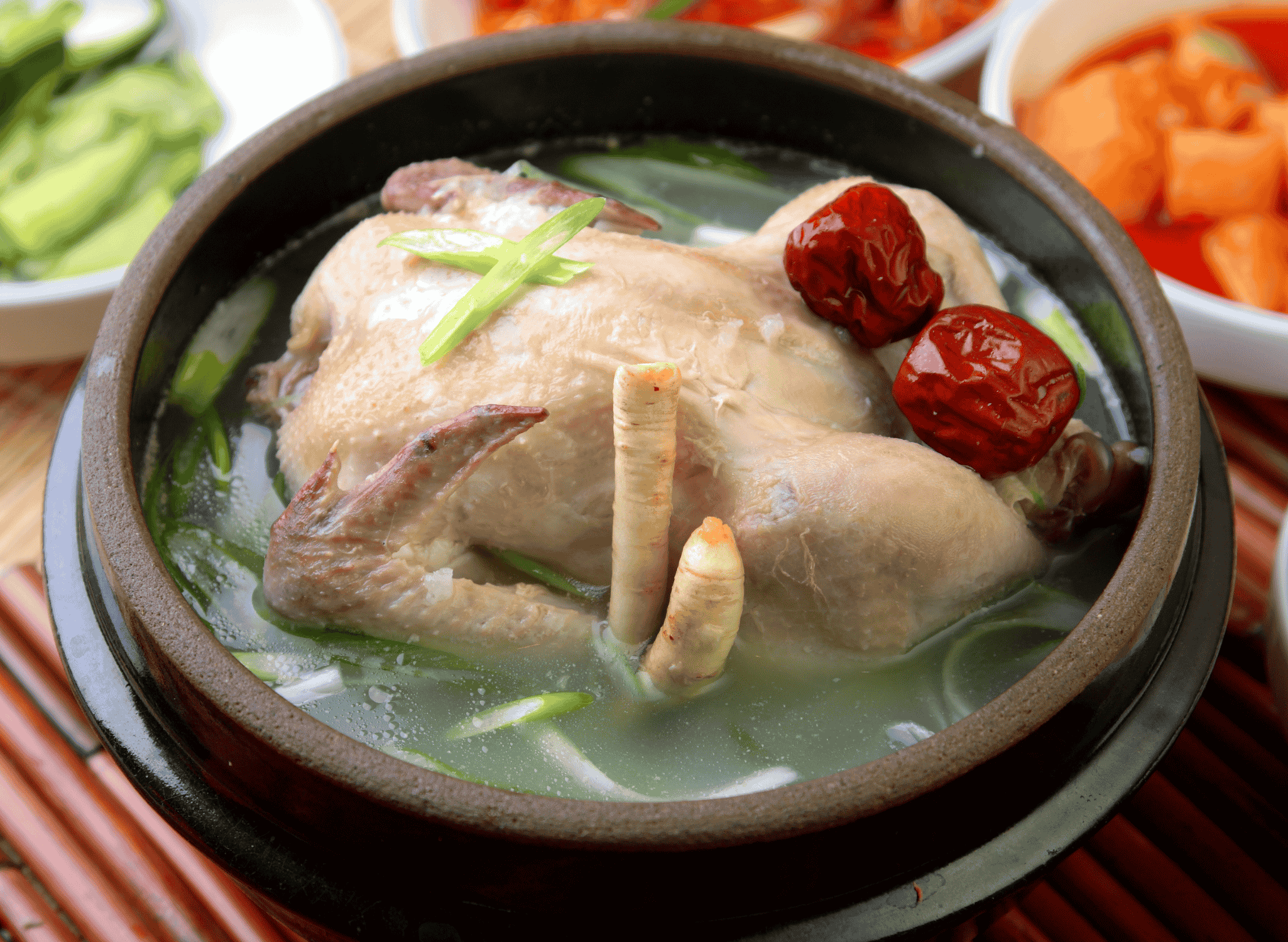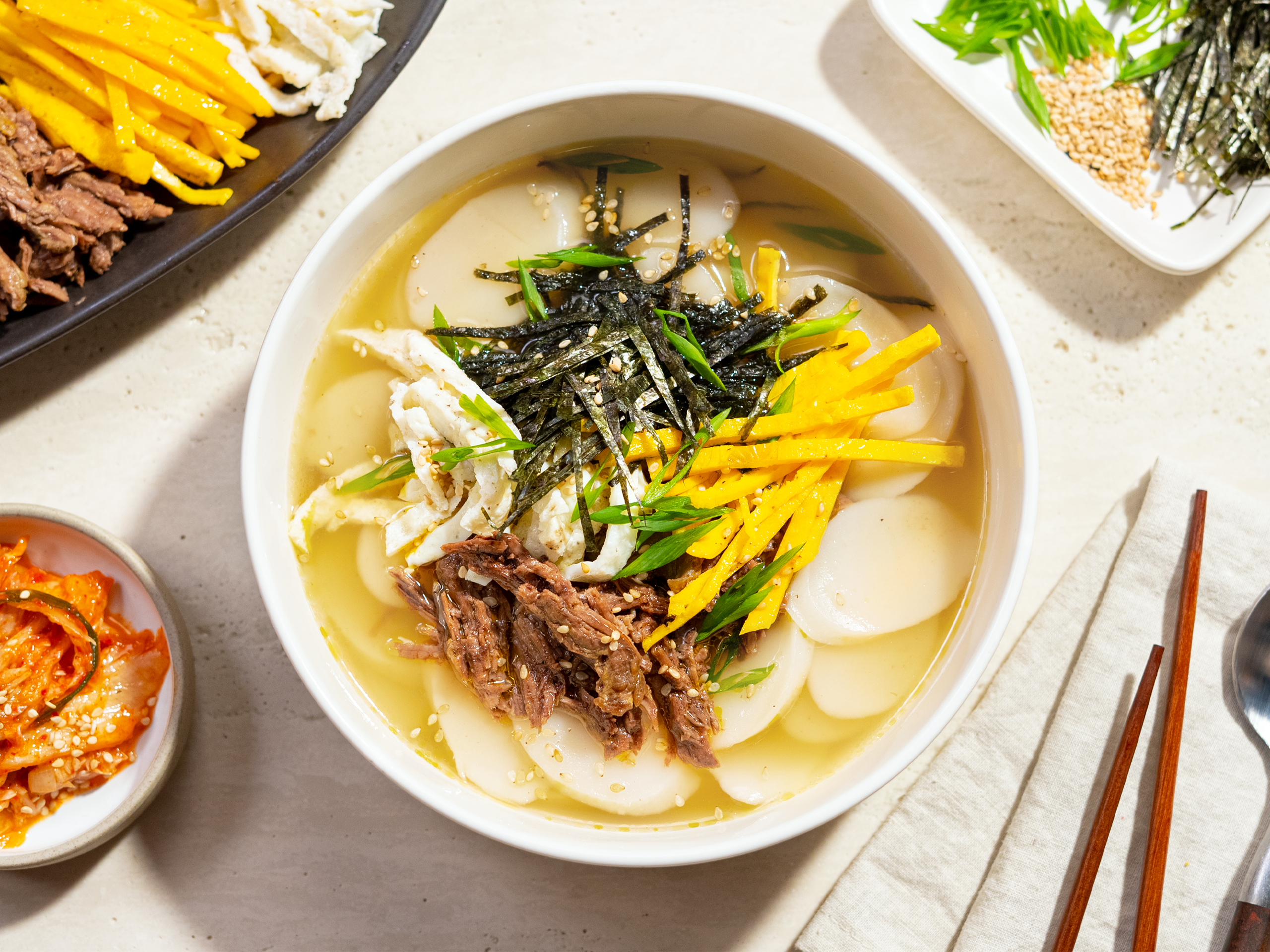Korean cuisine is renowned for its bold flavors, unique dishes, and deep cultural significance. From comforting soups to sizzling grilled meats, each dish carries its own meaning and tradition. Here are some unique Korean dishes, each offering a glimpse into the rich history and diverse flavors of South Korean culture.
1. Haejang-guk (해장국)

Haejang-guk (해장국), also known as hangover soup, is a reflection of South Korea’s well-known drinking culture. It’s no surprise that there’s a dish dedicated to curing hangovers. The word guk means “soup,” and haejang-guk literally translates to “soup to chase a hangover.” It’s also known as sulguk (술국).
This hearty soup typically includes dried napa cabbage, vegetables, chunks of congealed oxblood, blood sausages, and meat in a beef broth. There are two main types of haejang-guk: seonjiguk (선지국), which includes sliced congealed oxblood, and sundaeguk (순대국), which includes a kind of blood sausage made with intestines stuffed with pig’s blood and other ingredients.
2. Samgyeopsal (삼겹살)

Samgyeopsal (삼겹살), or samgyeopsal-gui (삼겹살구이), is a grilled dish made with pork belly. The word gui means grilled, and samgyeopsal translates to “three-layer flesh,” referring to the visible layers of meat and fat in the pork.
This dish is typically served with lettuce, perilla leaves, sliced onions, and raw garlic. The meat is smeared in ssamjang (a mix of doenjang – soybean paste – and gochujang – chili paste), or simply dipped in salt and sesame oil.
Interestingly, March 3 is celebrated as Samgyeopsal Day in South Korea, due to its three-layered composition. There’s even a local belief that eating samgyeopsal helps protect the body from air pollution caused by fine dust.
3. Jjajangmyeon (자장면)

Jjajangmyeon (자장면) originated from the Chinese dish zhajiangmian. It is a Korean-Chinese noodle dish topped with a thick black bean sauce made from chunjang, diced pork, and vegetables.
The dish was developed during the late 19th century when Chinese migrant workers from Shandong settled in Incheon. The Korean version uses a darker, sweeter sauce and often includes seafood and other meats.
Jjajangmyeon holds a special place in Korean culture, particularly during Black Day on April 14, when singles eat it to mark the occasion.
4. Samgyetang (삼계탕)

Koreans have a saying: Yi yeol chi yeol (이열치열), meaning “fight fire with fire.” One way they embody this is by eating Samgyetang (삼계탕) during the hot summer months to replenish lost nutrients.
This nourishing soup consists of a whole young chicken (poussin) or quail stuffed with garlic, rice, jujube, and ginseng. It is a traditional dish believed to restore energy and boost health. It is also commonly served to children and the elderly as a nutritious meal.
Variants of this include: Yeonggye Baeksuk, which is made with slightly larger chickens, and Banggye-tang, where the chicken is cut in half.
5. Tteokguk (떡국)

Tteokguk (떡국) is a sliced rice cake soup traditionally eaten during Seollal (설날), the Korean Lunar New Year. While the origin is unclear, the dish is mentioned in the 19th-century customs book ‘Dongguksesigi’, where it was made with beef or pheasant broth and seasoned with pepper.
The soup features thinly sliced rice cakes (tteok) in broth, topped with julienned egg, marinated meat, gim (seaweed), and sesame oil. It is believed that eating tteokguk on New Year’s Day brings good luck and symbolizes becoming a year older.
6. Bulgogi (불고기)

Bulgogi (불고기) is a beloved Korean grilled dish made from thinly sliced marinated beef, typically grilled over open flames. The term bulgogi means “fire meat.”
This dish is believed to date back to the Goguryeo era, where it was called maekjeok (맥적). In the Joseon dynasty, it evolved into neobiani (너비아니), meaning “thinly spread meat,” and was often served to the nobility.
Today, bulgogi is a staple in Korean BBQ culture, cherished for its sweet and savoury marinade.
7. Galbi (갈비)
:max_bytes(150000):strip_icc()/SES-galbi-recipe-7370630-Hero-01-c4d5faa08cc34d419597860536e32eab.jpg)
Galbi (갈비), meaning “ribs,” is another iconic grilled dish. It is most commonly made with beef short ribs, but can also use pork or other meats.
Galbi is typically marinated in a sweet soy-based sauce with garlic and sugar and then grilled at the table by diners. Both marinated and non-marinated versions are enjoyed widely, especially at family gatherings and special occasions.
Korean cuisine is a vibrant and diverse reflection of the country’s culture, history, and traditions. These dishes are not only delicious but also deeply symbolic. Whether you’re recovering from a hangover, celebrating the New Year, or enjoying a comforting meal with loved ones, Korean food offers a rich and flavourful experience that connects you to centuries of tradition.
Written by Aanchal Pathak
Connect with us on Instagram | X | YouTube for more content, interviews, & news.















excellent